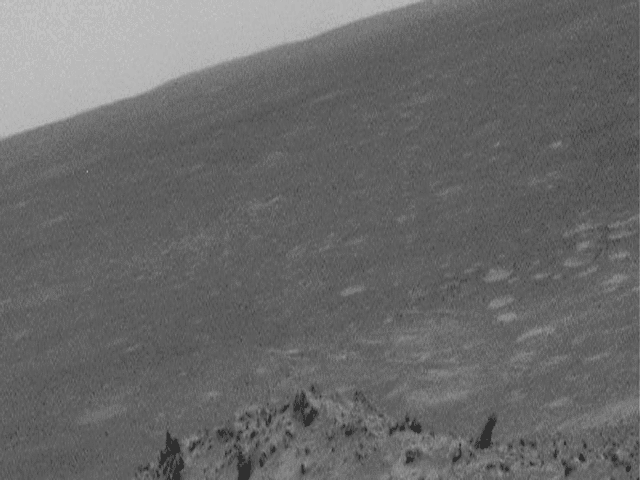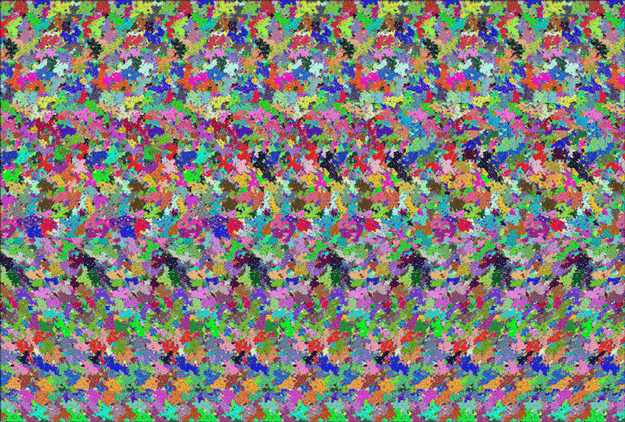|
Space Travel
VISIT OUR MOTHER SITE AT http://dunstan-times000.tripod.com/ IN THE ASTRONOMY SECTION.Ever wonder if we will ever reach the stars? Well we will and this equation may be the actual answer
IDEAL GAS EQUATION OF STATE:
P RT nkT = = å r
where r = mass density, n = number density, k = Boltzmann’s constant ANALYTIC MODEL PREDICTS THAT USEFUL THRUST,
Isp CAN BE OBTAINED FROM A THETA-PINCH THRUSTER ANALYTIC MODEL PREDICTS THAT USEFUL THRUST,
Isp CAN BE OBTAINED FROM A THETA-PINCH THRUSTER
Spaceships like the USS Enterprise NCC-1701-E,
from films 8-10 will soon be a reality
P RT nkT = = å r
where r = mass density,
n = number density, k = Boltzmann’s constant
ANALYTIC
MODEL PREDICTS THAT USEFUL THRUST, Isp CAN BE
OBTAINED
FROM A THETA-PINCH Thruster
If
one couldn't go faster than light, the round trip to the nearest star, would take at least eight years, and to the center
of the galaxy, at least eighty thousand years. If the space ship went very near the speed of light, it might seem to the people
on board, that the trip to the galactic center had taken only a few years.
one has to use technical
terms, like closed time like curves, which are code for time travel...
Where do I start..how about here
Taking a cue from biology, Constantinos Mavroidis, director of
the Computational Bionanorobotics Laboratory at Northeastern University in Boston, is exploring an alternative approach to
nanotech:
 Rather than starting from scratch, the concepts in Mavroidis's NIAC-funded study employ pre-existing,
functional molecular "machines" that can be found in all living cells: DNA molecules, proteins, enzymes, etc. This bio-nanorobot envisioned by Constantinos Mavroidis and
colleagues resembles a living cell, biological molecules
are already very adept at manipulating matter at the molecular scale. The rearranging of atoms that makes these feats possible
is performed by hundreds of specialized enzymes and proteins, and DNA stores the code for making them. Making use of these "pre-made" molecular machines is called "bio-nanotech.""Why reinvent the wheel?" Mavroidis says. "Nature has given us all this
great, highly refined nanotechnology inside of living things.
A concept he proposes is a "second skin" for astronauts to wear
under their spacesuits that would use bio-nanotech to sense and respond to radiation penetrating the suit, and to quickly
seal over any cuts or punctures. Rather than starting from scratch, the concepts in Mavroidis's NIAC-funded study employ pre-existing,
functional molecular "machines" that can be found in all living cells: DNA molecules, proteins, enzymes, etc. This bio-nanorobot envisioned by Constantinos Mavroidis and
colleagues resembles a living cell, biological molecules
are already very adept at manipulating matter at the molecular scale. The rearranging of atoms that makes these feats possible
is performed by hundreds of specialized enzymes and proteins, and DNA stores the code for making them. Making use of these "pre-made" molecular machines is called "bio-nanotech.""Why reinvent the wheel?" Mavroidis says. "Nature has given us all this
great, highly refined nanotechnology inside of living things.
A concept he proposes is a "second skin" for astronauts to wear
under their spacesuits that would use bio-nanotech to sense and respond to radiation penetrating the suit, and to quickly
seal over any cuts or punctures.
CP 05-01
NIAC is pleased to announce that 12 Phase I concepts have been selected for an award from the 158 proposals that were submitted.
|
A Contamination-Free Ultrahigh Precision Formation Flight Method Based on Intracavity Photon Thrusters
and Tethers |
| Bickford, Jim |
Extraction of antiparticles Concentrated in Planetary Magnetic Fields |
| Bonabeau, Eric |
Customizable, Reprogrammable, Food Preparation, Production and Invention System |
| Gilchrist, Brian |
Scalable Flat-Panel Nano-Particle Propulsion Technology for Space Exploration in the 21st Century |
| Jackson, Gerald |
Antimatter Harvesting in Space |
| Maise, George |
Multi-MICE: A Network of Interactive Nuclear Cryoprobes to Explore Ice Sheets on Mars and Europa |
| Menges, Pamela |
Artificial Neural Membrane Flapping Wing |
| Peck, Mason |
Lorentz-Actuated Orbits: Electrodynamic Propulsion without a Tether |
| Powell, James |
Magnetically Inflated Cable (MIC) System for Space Applications |
| Schnopper, Herbert |
Ultra-High Resolution Fourier Transform X-Ray Interferometer |
| Smith, Gerald |
Positron Propelled and Powered Space Transport Vehicle for Planetary Missions |
| Voronka, Nestor |
Modular Spacecraft with Integrated Structural Electrodynamic Propulsion |
|
|
I have having a wonderful time with my studies of space travel= to time travel...if you travel fast
enough you could return before you start as in this lovely poem...
There was a young lady of Wight,
Who traveled much faster than light,
She departed one day,
In a relative way,
And arrived on the previous night.
Her is a math problem for your teacher......In the last 100 years or so, people began to realize that
other forms of geometry were possible, in which the angles of a triangle, need not add up to a hundred and 80 degrees.
Consider, for example, the surface of the Earth. The nearest thing to a straight line on the surface of the Earth, is what
is called, a great circle. These are the shortest paths between two points, so they are the roots that air lines use. Consider
now the triangle on the surface of the Earth, made up of the equator, the line of 0 degrees longitude through London, and
the line of 90 degrees longtitude east, through Bangladesh. The two lines of longitude, meet the equator at a right angle,
90 degrees. The two lines of longitude also meet each other at the north pole, at a right angle, or 90 degrees. Thus one has
a triangle with three right angles. The angles of this triangle add up to two hundred and seventy degrees.
NASA has once again pushed back the launch date of the space shuttle Discovery.
This time it has been moved to no earlier than July 13, no later than July 31. In effect, it the shuttle Atlantis. NASA managers
looked at technical reviews over the past 10 days concluded that more preparation time was needed, especially regarding a
particular problem with the fuel tank. A fuel line by the lower half of the liquid oxygen tank has been known to collect ice
in the past, and the concern is the possibility of ice breaking off during launch and hitting the shuttle. The addition of
a heater is being considered as a method to deal with this problem.
 |
 |
|
McNutt, Jr Jr., ., Ralph L.
Johns Hopkins University
A Realistic Interstellar Explorer
April 28, 2005: The next time you look at the Moon, pause for a moment
and let this thought sink in: People have actually walked on the Moon, and right now the wheels are in motion to send people
there again. The goals this time around are more ambitious than they were in the days of the Apollo program. NASA's new Vision
for Space Exploration spells out a long-term strategy of returning to the Moon as a step toward Mars and beyond. The Moon,
so nearby and accessible, is a great place to try out new technologies critical to living on alien worlds before venturing
across the solar system.
 Whether a moonbase will turn out to be feasible hinges largely on the question
of water. Colonists need water to drink. They need water to grow plants. They can also break water apart to make air (oxygen)
and rocket fuel (oxygen+hydrogen). Furthermore, water is surprisingly effective at blocking space radiation. Surrounding the
'base with a few feet of water would help protect explorers from solar flares and cosmic rays. Whether a moonbase will turn out to be feasible hinges largely on the question
of water. Colonists need water to drink. They need water to grow plants. They can also break water apart to make air (oxygen)
and rocket fuel (oxygen+hydrogen). Furthermore, water is surprisingly effective at blocking space radiation. Surrounding the
'base with a few feet of water would help protect explorers from solar flares and cosmic rays.
If you wait long enough, a piece of outer space itself will come right to you.
As Colby Navarro worked innocently on the computer, a rock from space crashed through the roof, struck the printer, banged off the wall, and came to rest near
the filing cabinet. This occurred around midnight on March 26, 2003 in Park Forest, Illinois, USA, near Chicago. The meteorite, measuring about 10 cm across, was one of several that fell near Chicago that day as part of a tremendous fireball
We offer a variety of warranty and maintenance contracts. We will be happy to review the options based on specific needs and
requirements.
|
 |
 |
|
as I have written before and I would be thrilled if you post it is in the holgraphic principle there remains a higher
dimension that explains why we can calculate facts about black holes. My theory suggests that this greater dimension may be
interferring causing short grbs, also I have suggested possible brane interference grb.sonoma.edu GRBs appear to be divided into two classes: those shorter than 2 seconds, and those longer than 2 seconds. If this classification
scheme is correct, then it would follow that there are two different causes for the bursts. However, there are other properties
of the bursts which differ and could lead to alternative explanations. The jury is still out as to the classification scheme
and the associated mechanisms, especially for the shorter class of bursts SGR 1806-20 Blast I noticed that seconds after the initial blast of light, a doppler-like wave emanated from
that point and seemed to fly past the SWIFT camera. This "wave" appeared to be traveling at close to light speed, what was
it's composition? Referring Page: http://swift.sonoma.edu/resources/multimedia/images/
Answer provided by Lynn Cominsky (SSU E/PO Director):
The wave in question represented the light coming from the SGR
in the initial blast. The animation showed it as coming out afterwards, this was incorrect.
A common event often mistaken by people in the sky to be a Gamma-Ray burst is an Iridium Flare. If you visit this link
http://www.heavens-above.com, then put in your latitude and longitude, you will be able to see if there were any of these flares reported during this
time.
Fomalhaut, a 200-million-year-old
star, is a mere infant compared to our own 4.5-billion-year-old Sun. It resides 25 light-years away from the Sun. Located
in the constellation Piscis Austrinus (the Southern Fish), the Fomalhaut ring is ten times as old as debris disks seen previously
around the stars AU Microscopii and Beta Pictoris, where planets may still be forming. If our solar system is any example,
planets should have formed around Fomalhaut within tens of millions of years after the birth of the star. The Hubble images also provide a glimpse of the outer planetary region
surrounding a star other than our Sun. Many of the more than 100 planets detected beyond our solar system are orbiting close
to their stars. Most of the current planet-detecting techniques favor finding planets that are close to their stars. "The size of Fomalhaut's dust ring suggests that not all planetary
systems form and evolve in the same way — planetary architectures can be quite different from star to star," Kalas explained.
"While Fomalhaut's ring is analogous to the Kuiper Belt, its diameter is four times greater than that of the Kuiper Belt."The astronomers used the Advanced Camera for Surveys' (ACS) coronagraph
aboard Hubble to block out the light from the bright star so they could see details in the faint ring.
A huge, billowing pair of gas and dust clouds is the super-massive
star Eta Carinae.
Even though Eta Carinae is more than 8,000 light-years away,
features 10 billion miles across (about the diameter of our solar system) can be distinguished. Eta Carinae suffered giant
outburst about 150 years ago, when it became one of the brightest stars in the southern sky. Though the star released as much
visible light as a supernova explosion, it survived the outburst. Somehow, the explosion produced two lobes and a large, thin
equatorial disk, all moving outward at about 1.5 million miles per hour. Estimated to be 100 times heftier than our Sun, Eta
Carinae may be one of the most massive stars in our galaxy.


A Martian Dust Devil Passes
we are so fortunate that the general science community is so benevolent with their freedom to access all sorts of
wonderful information. This awesome NASA pic is no exception. Moving pictures from the surface of Mars...?

Our Business Philosophy
Our mission statement..... A Hitchhiker's Guide to the Moon  Imagine trekking in a lunar rover across miles of the Moon's rough surface. Your mission: to explore a crater with suspected
deposits of ice. Image left: When traveling on the Moon, don't forget your map!
Ion Thrusters Propel NASA into Future
|
05.27.05
|
We are a curious species with amazing capacities to imagine and dream. We wonder
about what we cannot see, are fascinated by what we do not know and are driven to explore.
In keeping with our continuous
quest for knowledge, President George W. Bush announced a new plan for NASA in Jan. 2004. A renewed focus on space exploration,
he explained, would strengthen our leadership in the world, improve our economy and enhance the quality of our lives.
 The Vision for Space Exploration calls for human and robotic missions to the Moon, Mars and beyond. To realize these ambitious
goals, we will need more powerful and efficient propulsion and power-generation systems -- systems that can thrust a spacecraft
out of Earth's orbit to the far reaches of the Universe. The Vision for Space Exploration calls for human and robotic missions to the Moon, Mars and beyond. To realize these ambitious
goals, we will need more powerful and efficient propulsion and power-generation systems -- systems that can thrust a spacecraft
out of Earth's orbit to the far reaches of the Universe. |
|
|


 Rather than starting from scratch, the concepts in Mavroidis's NIAC-funded study employ pre-existing,
functional molecular "machines" that can be found in all living cells: DNA molecules, proteins, enzymes, etc. This bio-nanorobot envisioned by Constantinos Mavroidis and
colleagues resembles a living cell, biological molecules
are already very adept at manipulating matter at the molecular scale. The rearranging of atoms that makes these feats possible
is performed by hundreds of specialized enzymes and proteins, and DNA stores the code for making them. Making use of these "pre-made" molecular machines is called "bio-nanotech.""Why reinvent the wheel?" Mavroidis says. "Nature has given us all this
great, highly refined nanotechnology inside of living things.
A concept he proposes is a "second skin" for astronauts to wear
under their spacesuits that would use bio-nanotech to sense and respond to radiation penetrating the suit, and to quickly
seal over any cuts or punctures.
Rather than starting from scratch, the concepts in Mavroidis's NIAC-funded study employ pre-existing,
functional molecular "machines" that can be found in all living cells: DNA molecules, proteins, enzymes, etc. This bio-nanorobot envisioned by Constantinos Mavroidis and
colleagues resembles a living cell, biological molecules
are already very adept at manipulating matter at the molecular scale. The rearranging of atoms that makes these feats possible
is performed by hundreds of specialized enzymes and proteins, and DNA stores the code for making them. Making use of these "pre-made" molecular machines is called "bio-nanotech.""Why reinvent the wheel?" Mavroidis says. "Nature has given us all this
great, highly refined nanotechnology inside of living things.
A concept he proposes is a "second skin" for astronauts to wear
under their spacesuits that would use bio-nanotech to sense and respond to radiation penetrating the suit, and to quickly
seal over any cuts or punctures.





 Imagine trekking in a lunar rover across miles of the Moon's rough surface. Your mission: to explore a crater with suspected
deposits of ice.
Imagine trekking in a lunar rover across miles of the Moon's rough surface. Your mission: to explore a crater with suspected
deposits of ice.  The Vision for Space Exploration calls for human and robotic missions to the Moon, Mars and beyond. To realize these ambitious
goals, we will need more powerful and efficient propulsion and power-generation systems -- systems that can thrust a spacecraft
out of Earth's orbit to the far reaches of the Universe.
The Vision for Space Exploration calls for human and robotic missions to the Moon, Mars and beyond. To realize these ambitious
goals, we will need more powerful and efficient propulsion and power-generation systems -- systems that can thrust a spacecraft
out of Earth's orbit to the far reaches of the Universe.